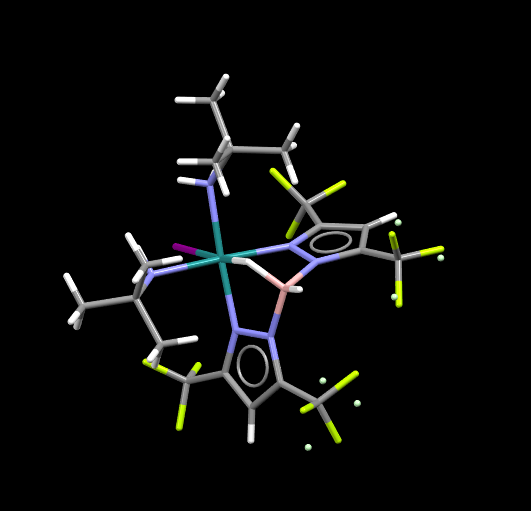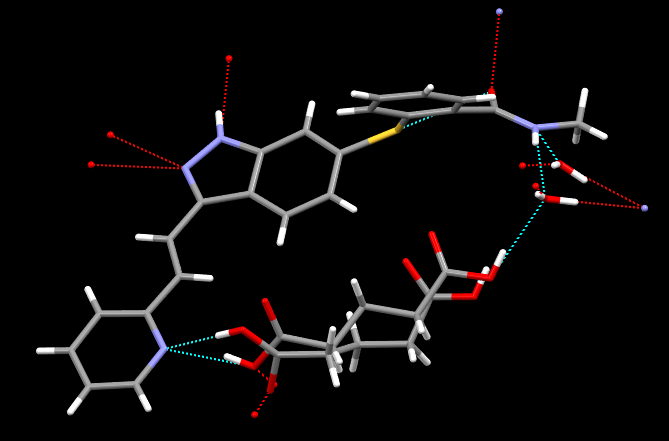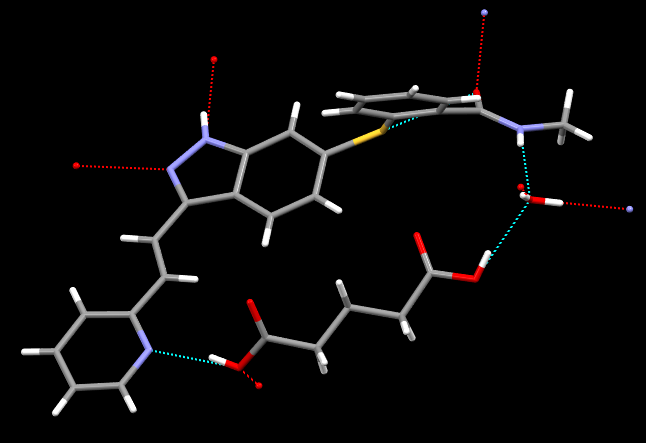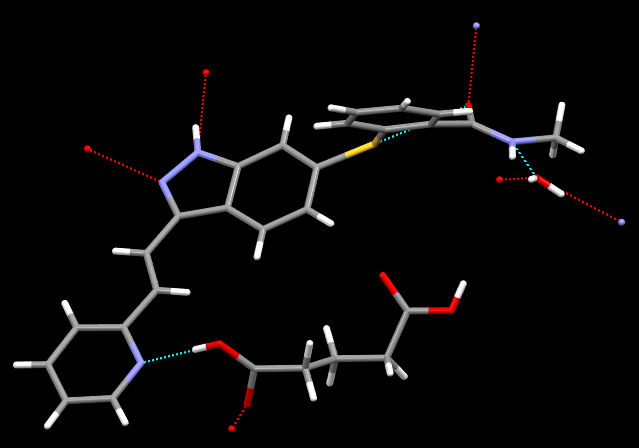Handling Disordered Structures in Mercury and the CSD Python API
Over the last few months we have been working on improving the way that we handle disordered structures when loading CIFs into CCDC software including visualizing the different disorder models and visualizing the contacts and voids for each disorder model. Read on to find out more about these exciting changes.
What is Disorder?
Even in a crystal structure, atoms are constantly in motion and a refined structure represents the average of all the possible positions of the atom. Atoms can be refined over multiple sites to model this disorder.
There are various types of disorder, including:
- Dynamic disorder – atoms, or groups of atoms, can migrate freely between positions within the crystal structure. These movements are a natural part of all crystals, but the extent of the movements become more significant at higher temperatures.
- Static disorder – atoms, or groups of atoms, can occupy one or more essentially fixed positions in the crystal structure. This typically occurs when the atoms in a crystal structure have more than one possible location to occupy that results in the same, or similar, low energy, and this is not affected by changing temperature.
- Substitutional disorder – a crystallographic position is occupied by more than one type of atom (substitutional disorder is usually a type of static disorder).
Why is Disorder Important?
Understanding and analysing all possible disorder configurations is important in structural analysis and structural informatics to enhance structural understanding, enabling researchers to make knowledge-based decisions and undertake risk analyses.
How is Disorder Currently Handled in the Cambridge Structural Database?
Disorder is increasingly important in the Cambridge Structural Database (CSD) with the annual percentage of disordered structures increasing from 12% to 38% since 1980 due to improvements in the tools for resolving disorder in more complex systems. Currently, over 330,000 of structures in the CSD are disordered which is over 25% of the structures in the database.
Currently if a structure in the CSD contains disorder, then the minor occupancy sites are suppressed to leave a single representative atomic position that will then be matched against the chemical diagram. Suppressed atoms are not deleted; they simply take no further part in the establishment of the crystallographic connectivity and therefore will not be used in ConQuest 3D searches.

New Disorder Improvements in the CSD Portfolio
Improvements to how disorder is handled when you load a CIF into Mercury or the CSD Python API include the ability to:
- Load CIFs into Mercury and visualize the different disorder models in the structure.
- Load CIFs into Mercury and the API and run some of the tools on the different disorder models:
- Examine the contacts and hydrogen bonds
- Calculate the voids
- Calculate the chemistry
- Add any missing hydrogens.
It is also possible to load CIFs into enCIFer and visualize the different disorder models.
A new disorder class has also been added to the CSD Python API which allows users to run a number of calculations on the combinations of the different disorder models.



Future Disorder Improvements – Talk to Us!
We are excited by these new improvements to how we handle disorder in CCDC tools and we hope you find these improvements useful in your work. This is the first phase of the project and in future work we want to add disorder models to CSD entries but we would also be interested in what your priorities are in this area to guide us in the development work we do in the future – please get in touch to share your disorder insights.
Next Steps
- Learn more about the Cambridge Structural Database (CSD) – the comprehensive repository of validated and curated small molecule organic and metal-organic crystal structures.
- View, analyse, and understand molecular structures and their properties with Mercury.
- See how the CSD Python API can programmatically access structural chemistry data in the CSD and perform custom, repeatable molecular analyses.
- Find out how to safely check and edit CIFs without compromising the syntax with enCIFer.
- Request a demo of the CSD and/or CSD software that supports scientific discovery, development, and analysis, and is trusted by thousands across industry and academia.